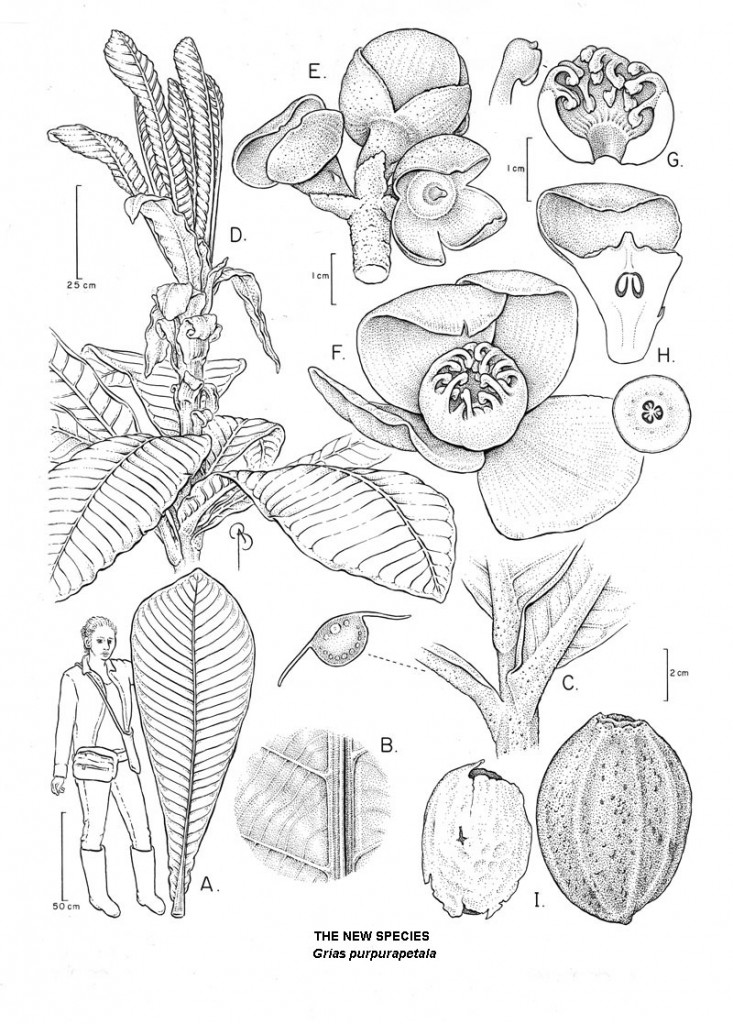Discovery of a Spectacular Tree
Posted in Around the Garden on April 18 2013, by Scott Mori
Scott A. Mori has been studying New World rain forests for The New York Botanical Garden for 38 years. His most recent book is Tropical Plant Collecting: From the Field to the Internet.

As mentioned in previous posts, my main research focus is the classification and ecology of the Brazil nut family (Lecythidaceae) in the New World tropics. The Brazil nut–the largest nut in a can of mixed nuts, for reference–and the cannon ball tree are the best known plants of this family, the former for its economic importance and the latter as an ornamental tree in tropical botanical gardens. Because I have been studying this group of plants for nearly 50 years, many people are surprised when they learn that there are still new species to be discovered.
For many years I had known of a large-leaved species of the Brazil nut family that had been collected in southwestern Colombia, but I was not able to identify the species; the few available collections were poorly prepared and the collection area was not safe for botanists to visit. Therefore, when I was invited to give a lecture at the fifth Colombian Botanical Congress in April of 2009, in San Juan de Pasto, I immediately accepted the invitation–this was relatively close to where the mystery plant grows and, more importantly, it was then safe to travel there. Coincidentally, the congress field trip was to the Reserva Natural Río Ñambí, a beautiful private cloud forest reserve known for the 29 species of hummingbirds found there, as well as for its spectacular plants, many of them epiphytes covering the trees. One of those trees happened to be the very plant that I had my eyes on for so many years!
